Best podcasting microphones 2025: our expert picks for every budget and level, with audio demos
Record your next podcast or stream your heart out with the very best podcast mics, including our recommendations under $100/£100 – plus full reviews and expert buying advice
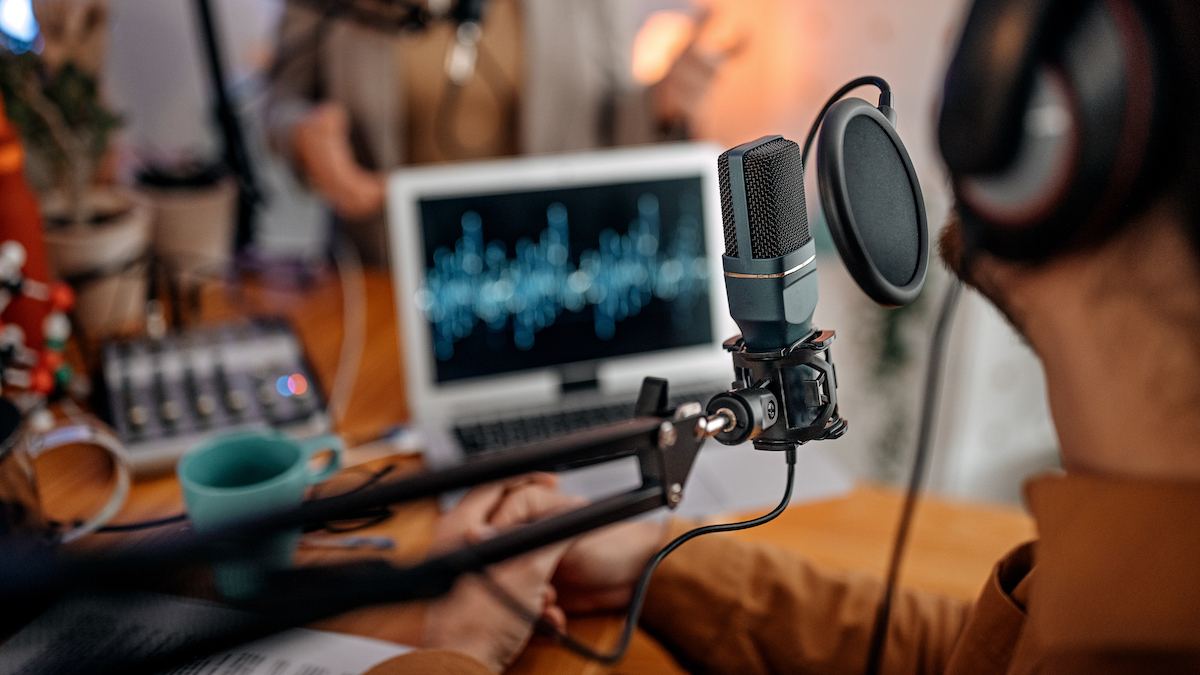
The good thing about podcasting, or streaming, is that it’s so incredibly easy to get started. Using only a basic plug and play microphone and some recording gear, you can be up and running in barely any time. If you’re planning on starting your own channel, or launching a podcast and taking the airwaves by storm, then you’re going to need one of the best podcasting microphones in this guide to ensure you capture every last word. I’ve tested and compiled my top picks here to help you narrow down your options.
You’re probably already aware that podcasting is an absolutely huge medium. The simple act of voices telling stories, conducting interviews or teaching weird and wonderful things has made it one of the most important - and fastest-growing - means of communication of the 21st century.
Search any of the main podcast providers (like Apple Podcasts, Spotify etc) and you will find one about pretty much any topic you can think of, including some pretty amazing podcasts about music. It also helps that actually making podcasts isn’t anywhere near as difficult, or expensive, as you might think, both in terms of technical know-how and the minimal equipment you’ll need to pick up to get started. Forget expensive cameras or exotic locations. All you need is a solid podcast mic, something to record it into (ie. a laptop or PC) and a way of editing the audio later. Oh, and don't forget you'll need something to say. That’s kind of important.
Right now my top pick overall is the Shure MV7+. In my opinion it strikes the ideal balance between features, performance and aesthetics, while also representing excellent value for money. Hybrid connectivity between USB-C and XLR make it hugely versatile too, whilst I found the touch controls really enhanced the user experience. Sound isolation is unrivalled at this level, too.
For this guide, myself and a team of MusicRadar's expert reviewers have tested everything from budget options and mobile-friendly podcast microphones, to pro level studio mics, plus USB and XLR options. I recorded each mic in a variety of real-world scenarios too, with a focus on voice recording, to ensure they're up to the task and worthy of recommendation. I’ve included an audio sample for each mic in this guide so you can get a real feel for what each mic is capable of and how they compare. You can find out more about how I recorded these demos here.
If you need more specific guidance before you decide which podcasting mic is right for you in 2025, head to the dedicated FAQ section at the bottom of the page for everything you need to know, written by me and our in-house experts. If not, keep scrolling to check out my hand-picked choices.
Quick list
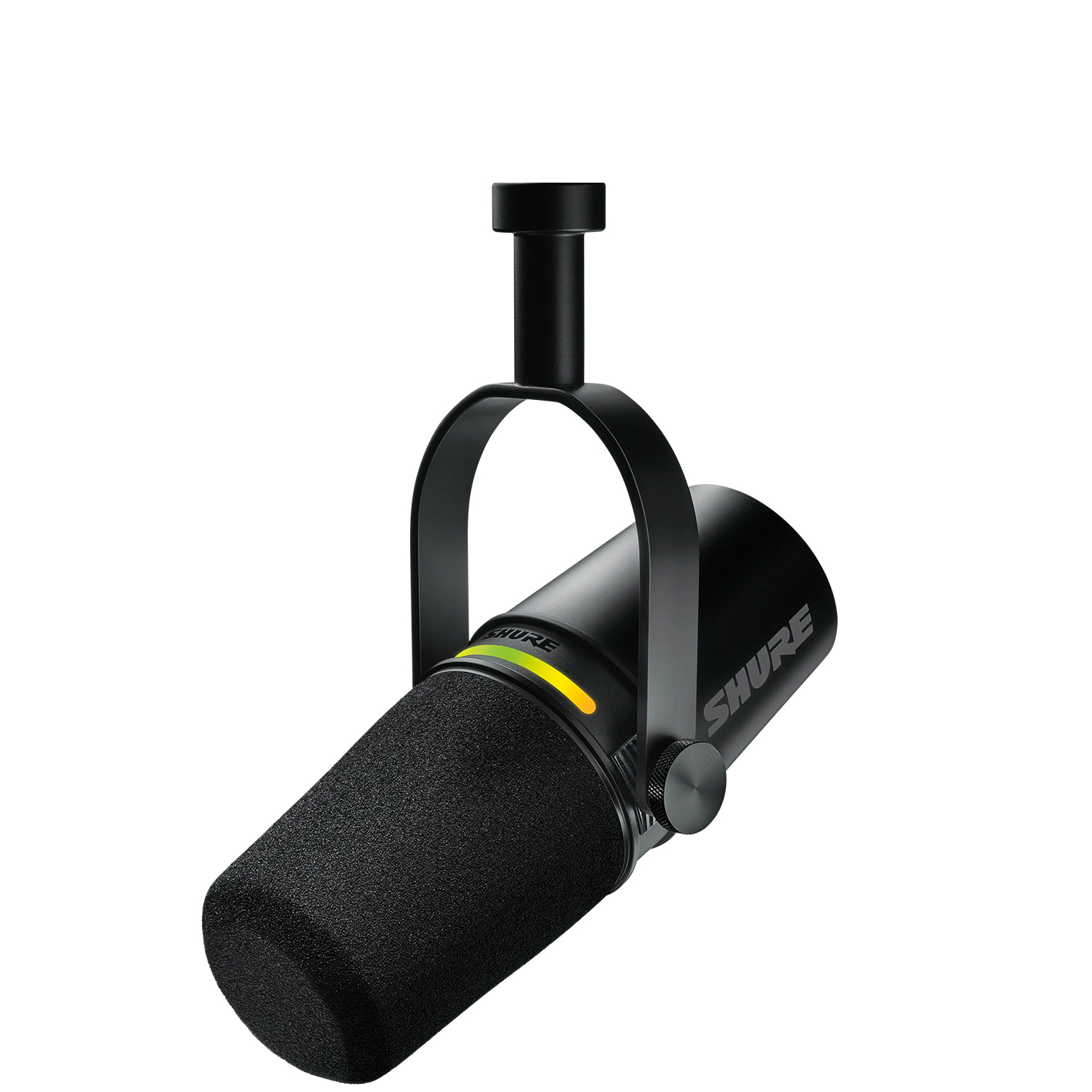
The MV7+ can function with both USB-C and XLR connections simultaneously, making it a versatile podcast mic for home recording or creating content on the go. We love the customisable multicolour LED touch panel for intuitive control over gain, monitoring levels and muting functions.
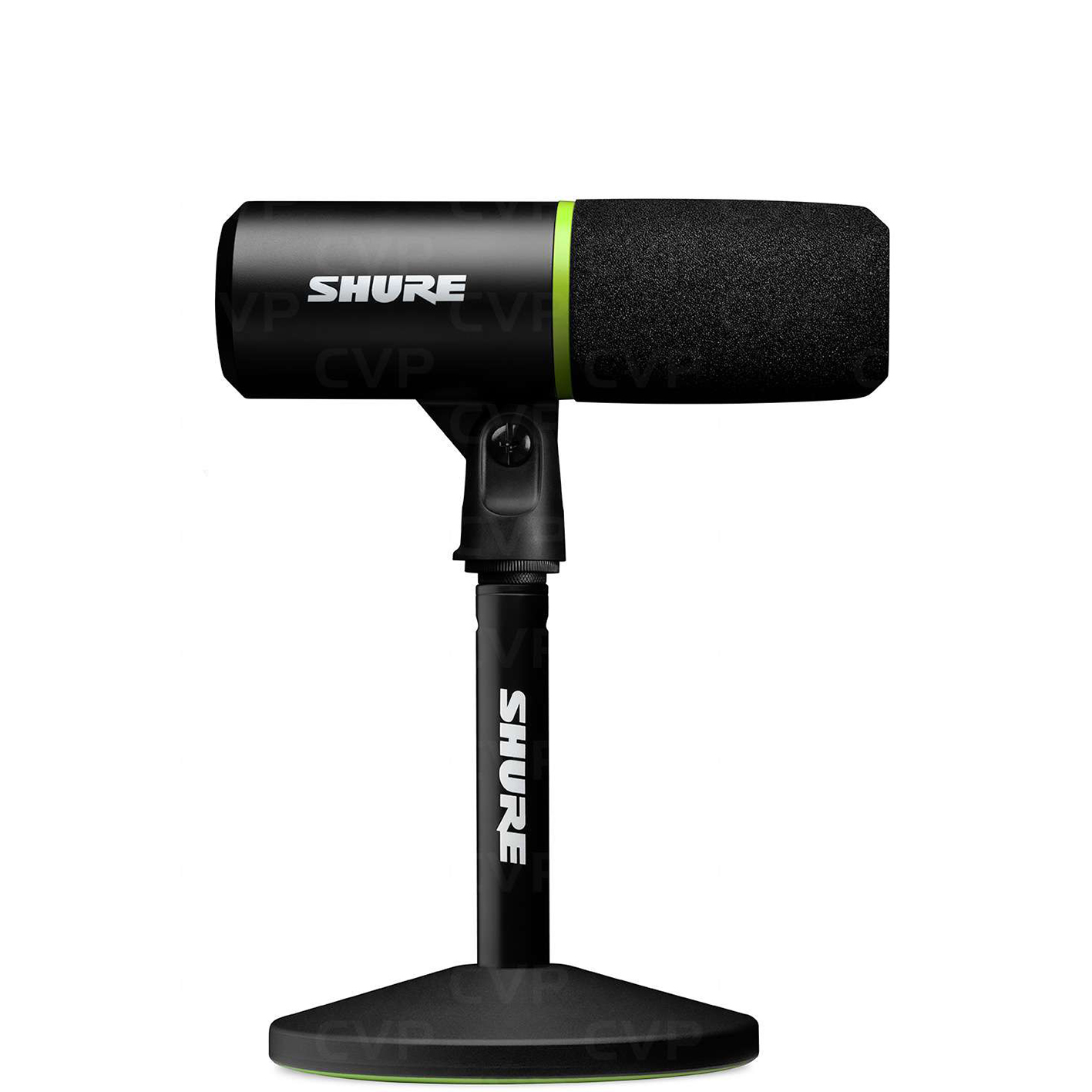
This is a super accessible plug-and-play mic for podcasters, streamers, and gamers who want pro-level sound without all the hassle. The MV6 really shines with its Auto Level mode, keeping your voice at the perfect volume even if you’re moving around while talking.
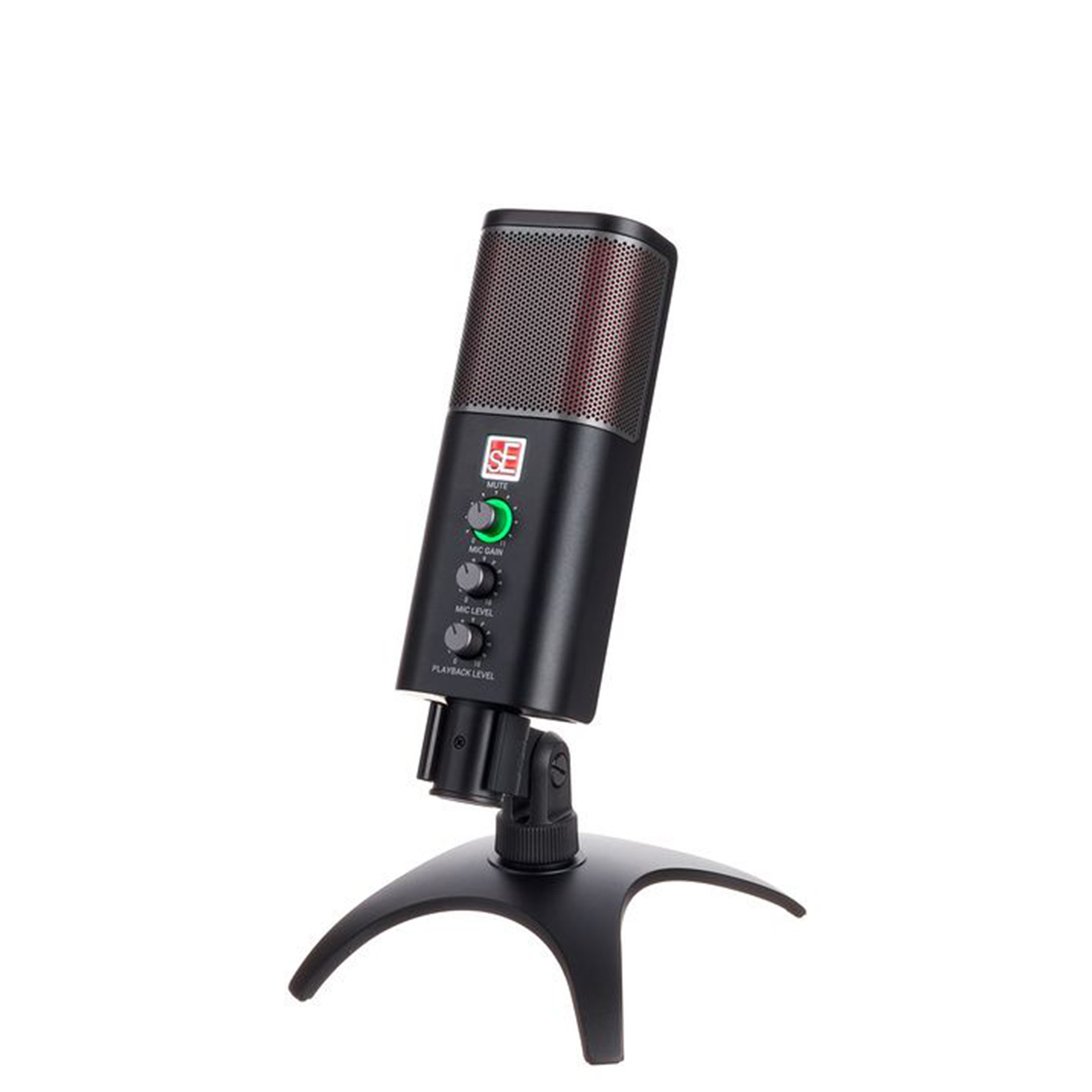
A refreshing option for anyone wanting top-notch sound in a simple, plug-and-play mic. The Neom combines high-quality audio with ease of use, making it a great companion for both beginners and experienced creators who don’t want to fuss with complex setups.
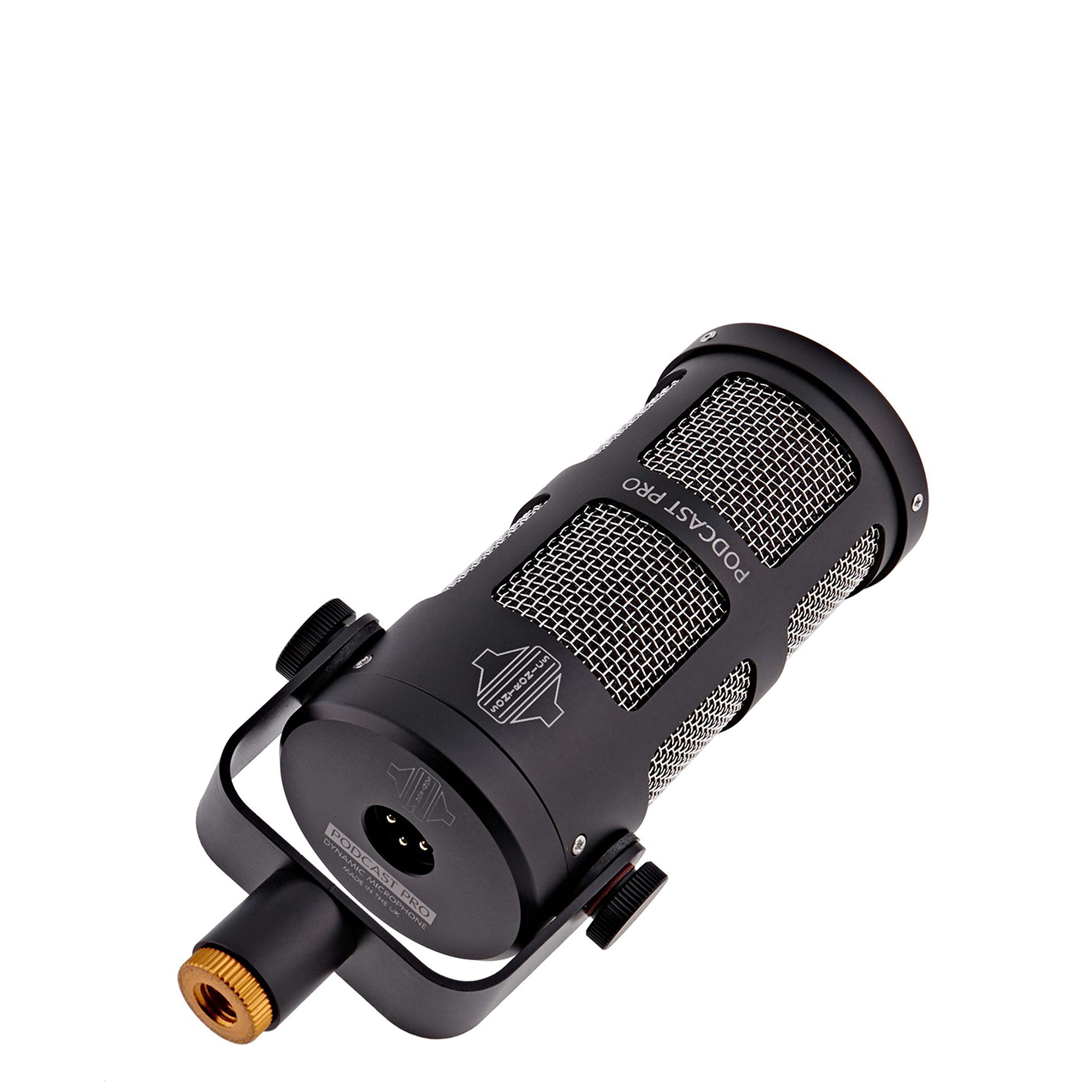
This unique-looking broadcast mic is designed and built in the UK, and is geared entirely towards the spoken word. In practice, its supercardioid pickup pattern does a great job at rejecting pretty much everything that isn’t spoken directly into it. It's reasonably priced, too.
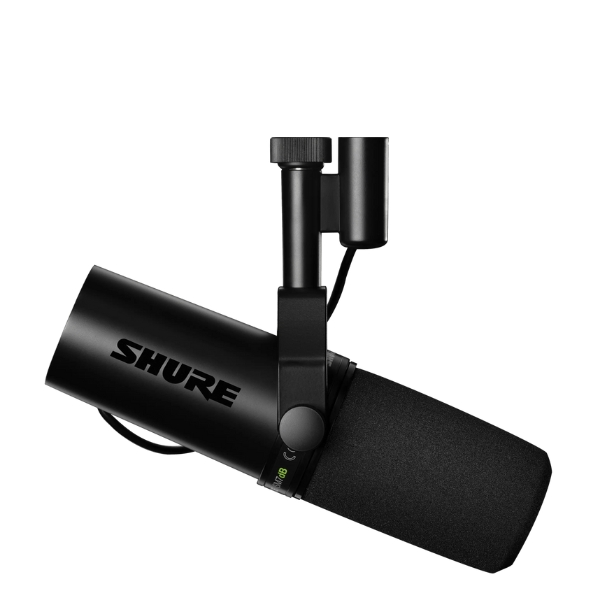
The SM7dB is an update to one of the most popular dynamic mics ever made. Often seen on streams, podcasts, and YouTube videos, this dynamic microphone is designed simply to deliver clean, clear audio. It handles loud environments very well, and the new built-in power amp overpowers its previous reputation for being quiet.
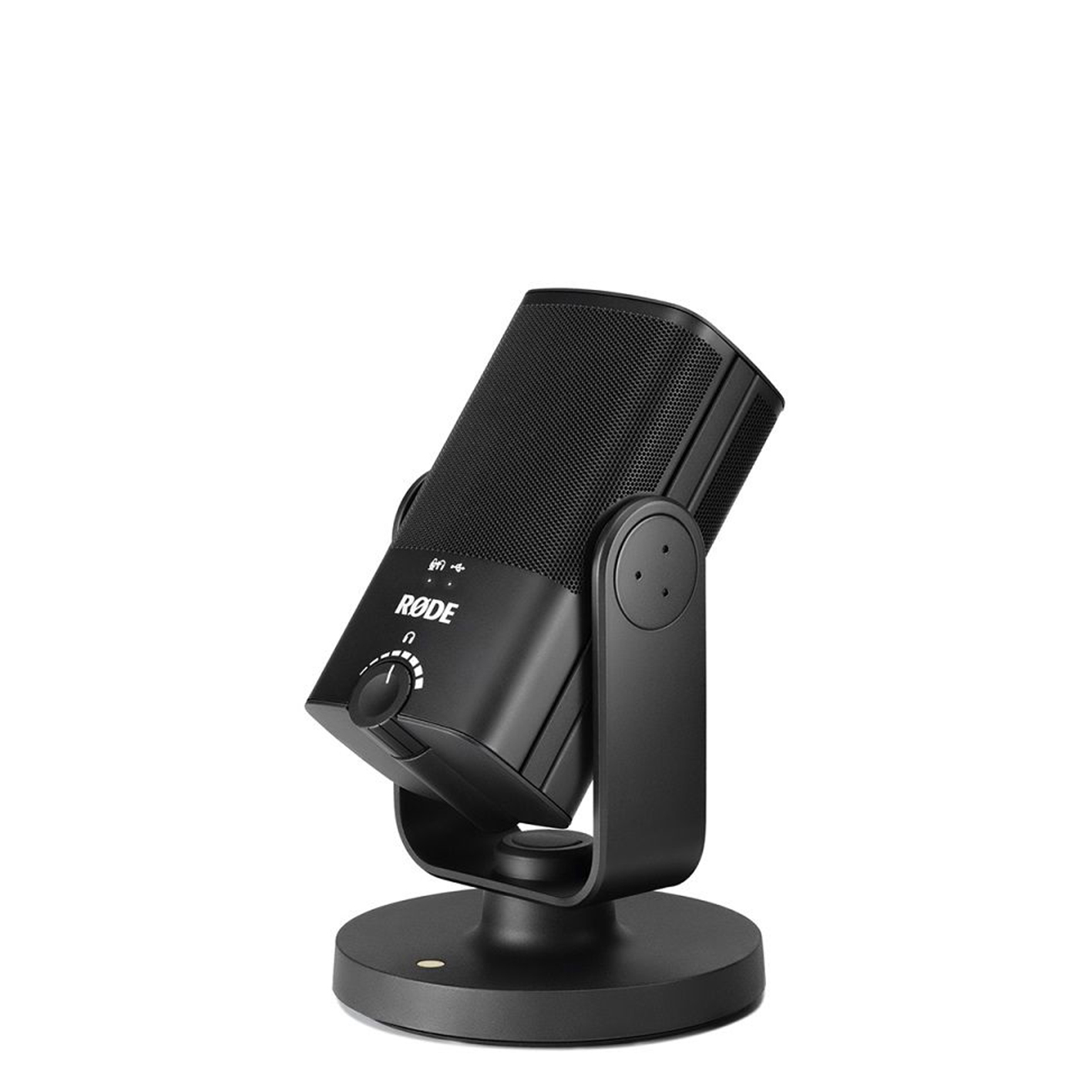
This set-and-forget desktop option from mic specialists Rode is an ideal choice for podcasting. Whether you're recording to a PC or an iPad, the NT-USB is incredibly easy to use. We particularly like the volume and clarity of the built-in headphone amp. Comes with pop shield and 6 metre USB cable.
Load the next 4 products... ↓
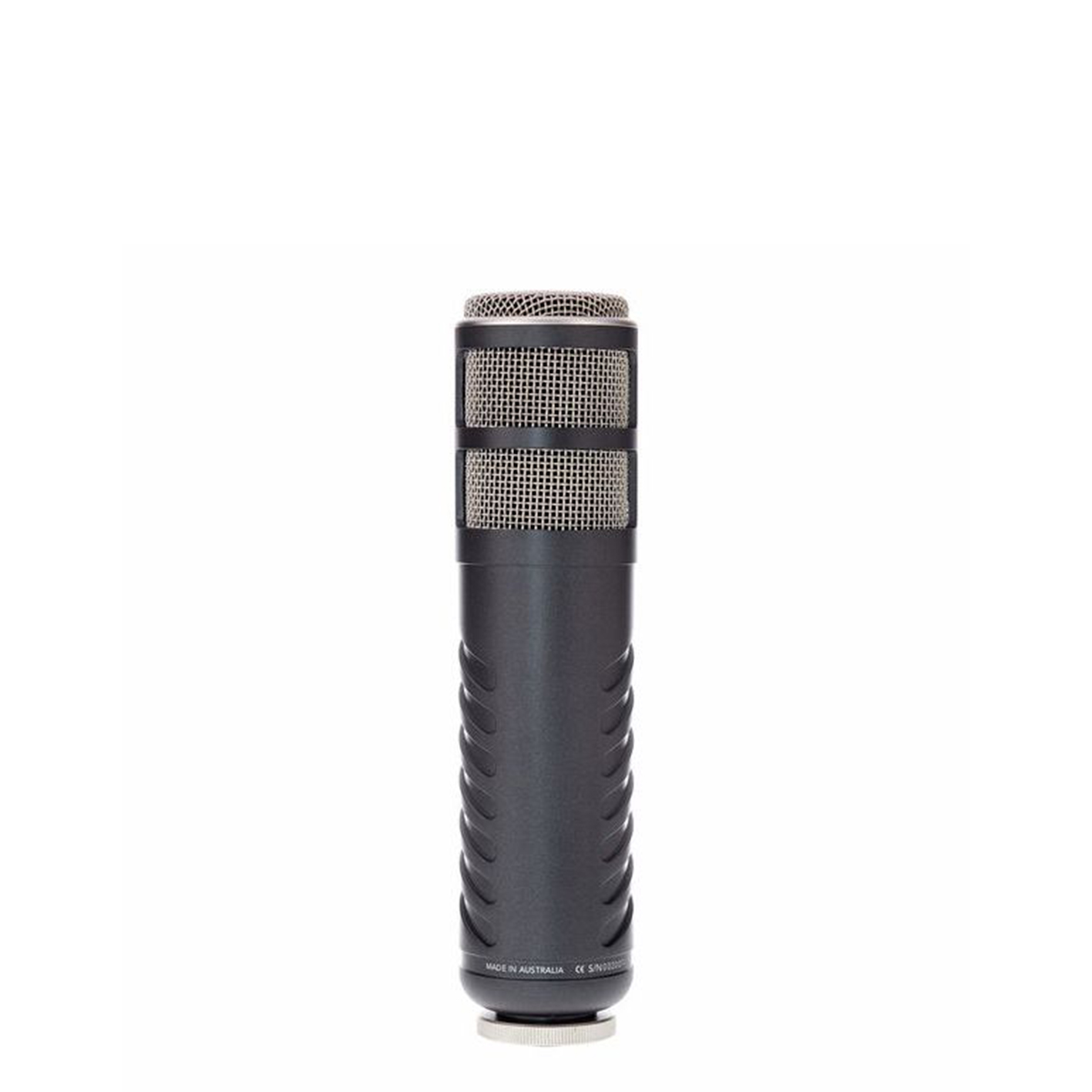
This mic is built specifically for vocal recording, and more specifically for speech. It’s pitched as a broadcast microphone, which means it could feasibly be used for TV, radio or other high-pressure situations and is excellent at coping with ambient noise.
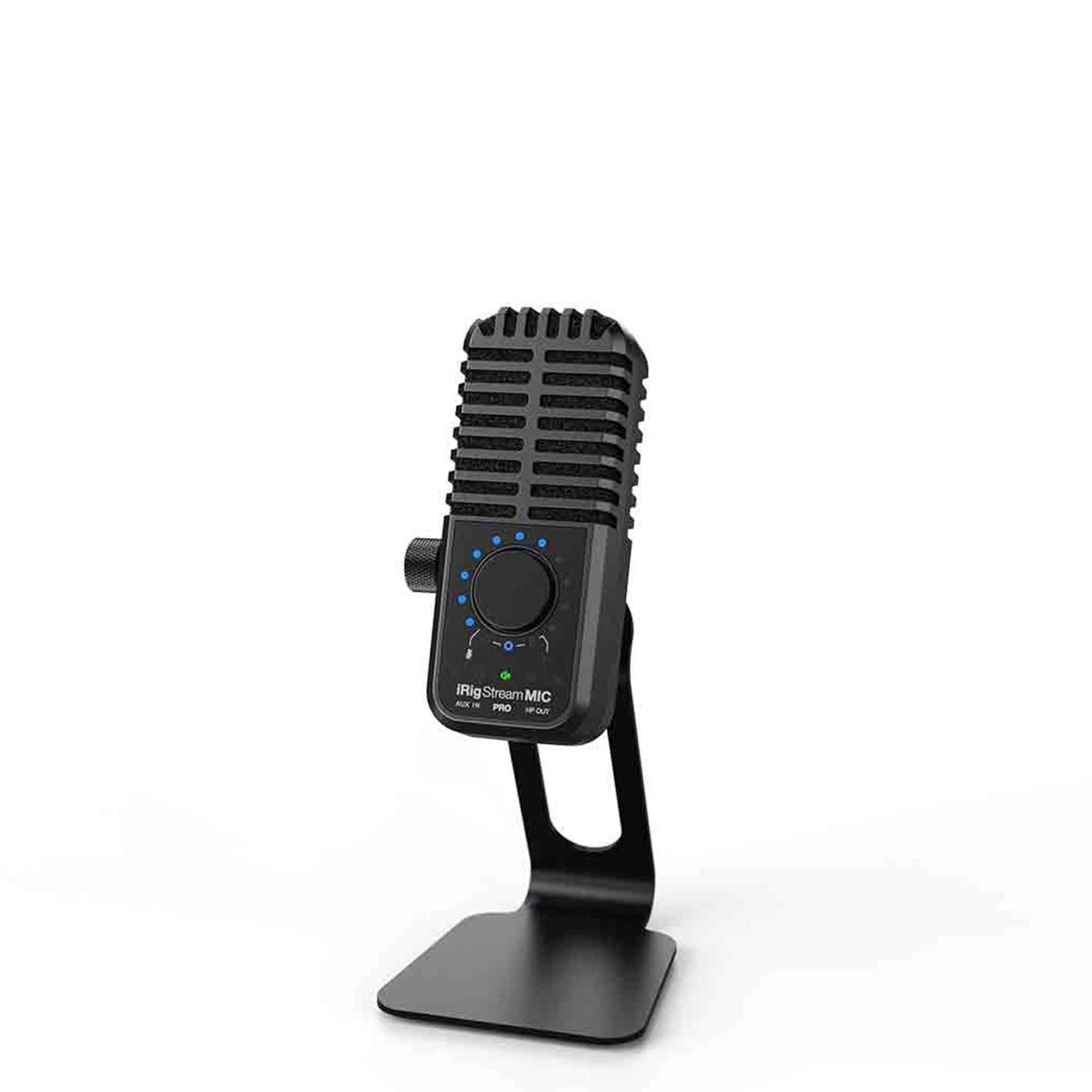
The portable iRig Stream Mic Pro combines a dual-capsule condenser mic - with four different pickup patterns - with a 2 in/4 out audio interface for connecting different sound sources and outputs, meaning you only need this device and you’re up and running.
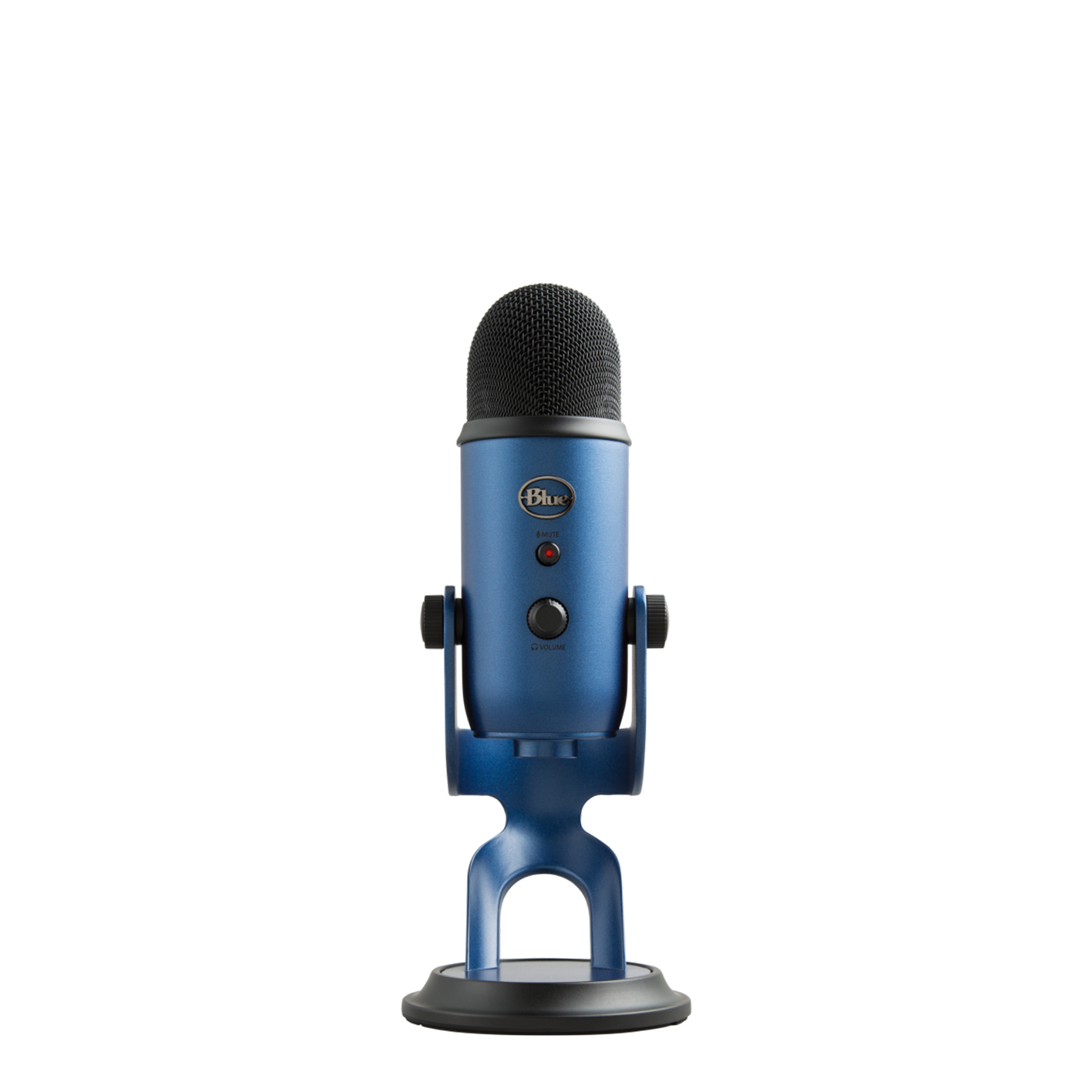
The Blue Yeti is one of the best known and most-recognisable mics out there - you've probably seen it pop up on your favourite YouTuber and Twitch streams - and for good reason. In our tests we found it easy to use, it sounds superb - thanks to its three condenser capsules - and doesn't cost the earth.
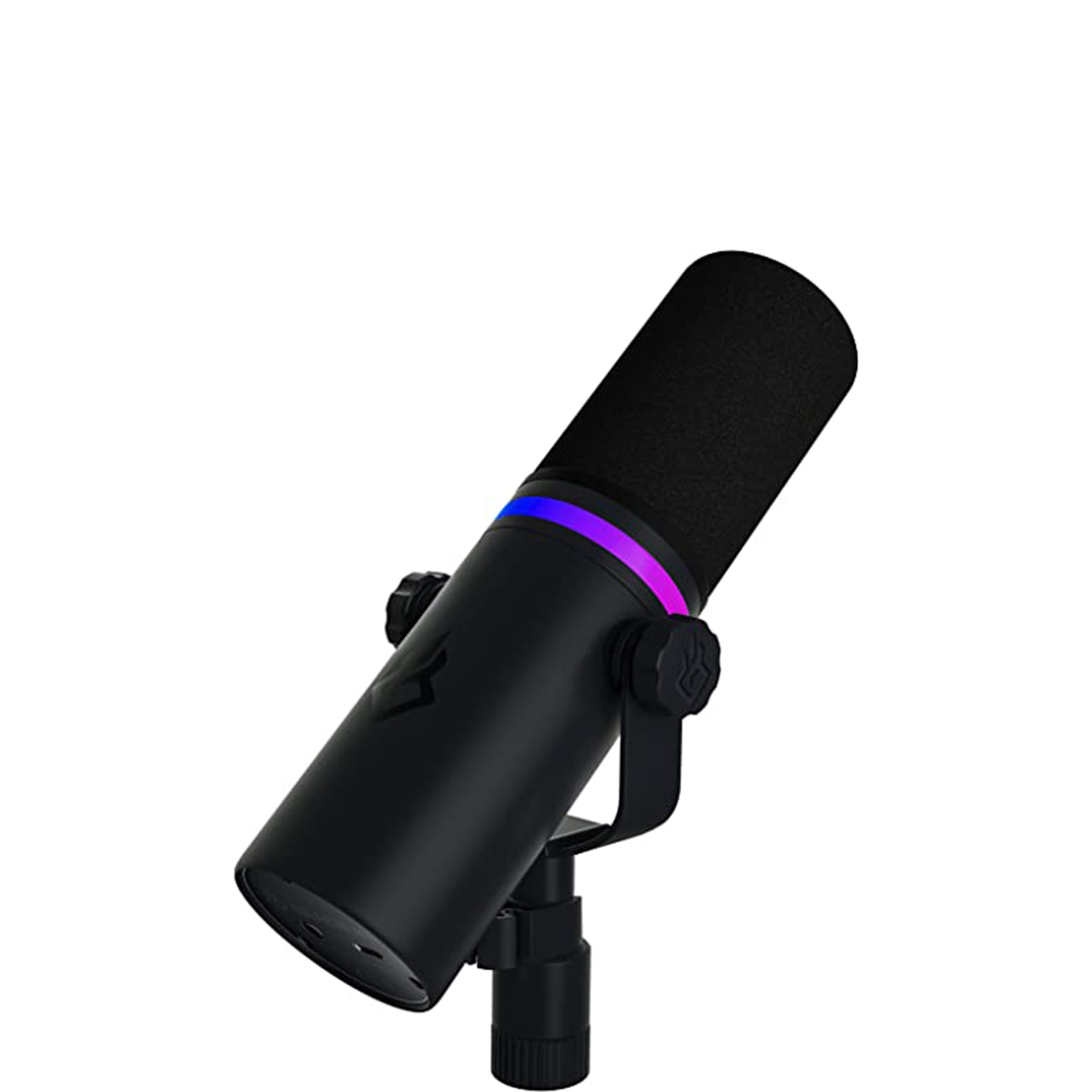
The BEACN Mic is a great-looking dynamic broadcast mic, which connects to your computer via USB and features some pretty nifty onboard processing to make your voice sound as good as it possibly can. A huge part of this is down to the complementary app, which enables you to add a professional sheen to your voice via EQ, compression and more.
Best overall
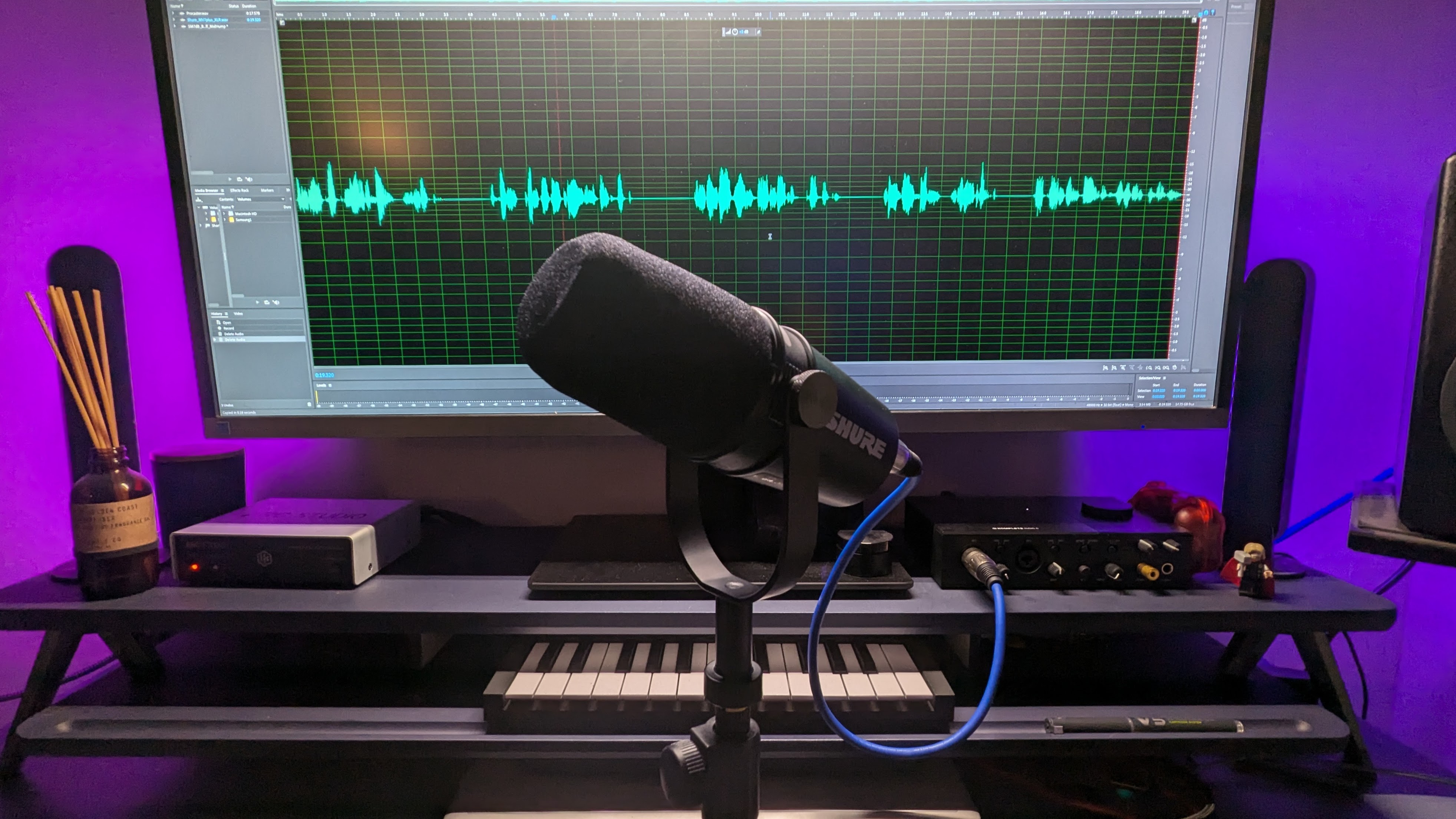
Specifications
Reasons to buy
Reasons to avoid
🎤 Someone who is ready to get serious about podcasting and needs a mic that sounds great, is versatile and built to last through years of use and abuse.
✅ Buy if you want the best mic available today: The MV7+ has quickly become the go-to mic for podcasters and streamers who value excellent audio.
❌ Avoid if you're on a strict beginner budget: Shure has a strong reputation and makes some of the best products out there, but that comes at a cost.
Look a little further down this list and you’ll see Shure’s latest SM7dB microphone, which is based on the venerable SM7B. It's a true powerhouse in the podcast world (and beyond), and worthy of the high levels of respect it gets. Not that you’ll catch Shure sitting on its hands, not when the podcasting landscape is changing as quickly as it is. Which is why we've welcomed the Shure MV7+ into the fold, which takes everything good about its older brother and adds in a direct-to-computer USB-C connection. But do you want to know best thing of all? It can function with both methods - USB and XLR - simultaneously.
The versatility this offers makes the MV7+ a very exciting mic indeed. We found it to be equally at home being taken out with a laptop as a portable rig as it was taking centre stage in our home studio environment connected to a PC.
We particularly like the integrated DSP features which include real-time denoising, plus a digital pop filter which helped us capture super clear and professional-sounding audio, much of which was ready to use straight from the mic.
When you factor in compatibility with Shure’s excellent MOTIV app, which helps add some professional sheen to your recordings in real-time, you’ve got a package which is pretty hard to beat amongst all the options on this list.
Of course, you'll pay a little more for this level of quality, robustness and functionality, but in our experience, product at this level is worth the investment and will deliver more long-term performance.

"Finesses the original to deliver one of the most versatile, feature-laden mics for podcasting, streaming and recording."
Read more: Shure MV7+ review
Best on a budget
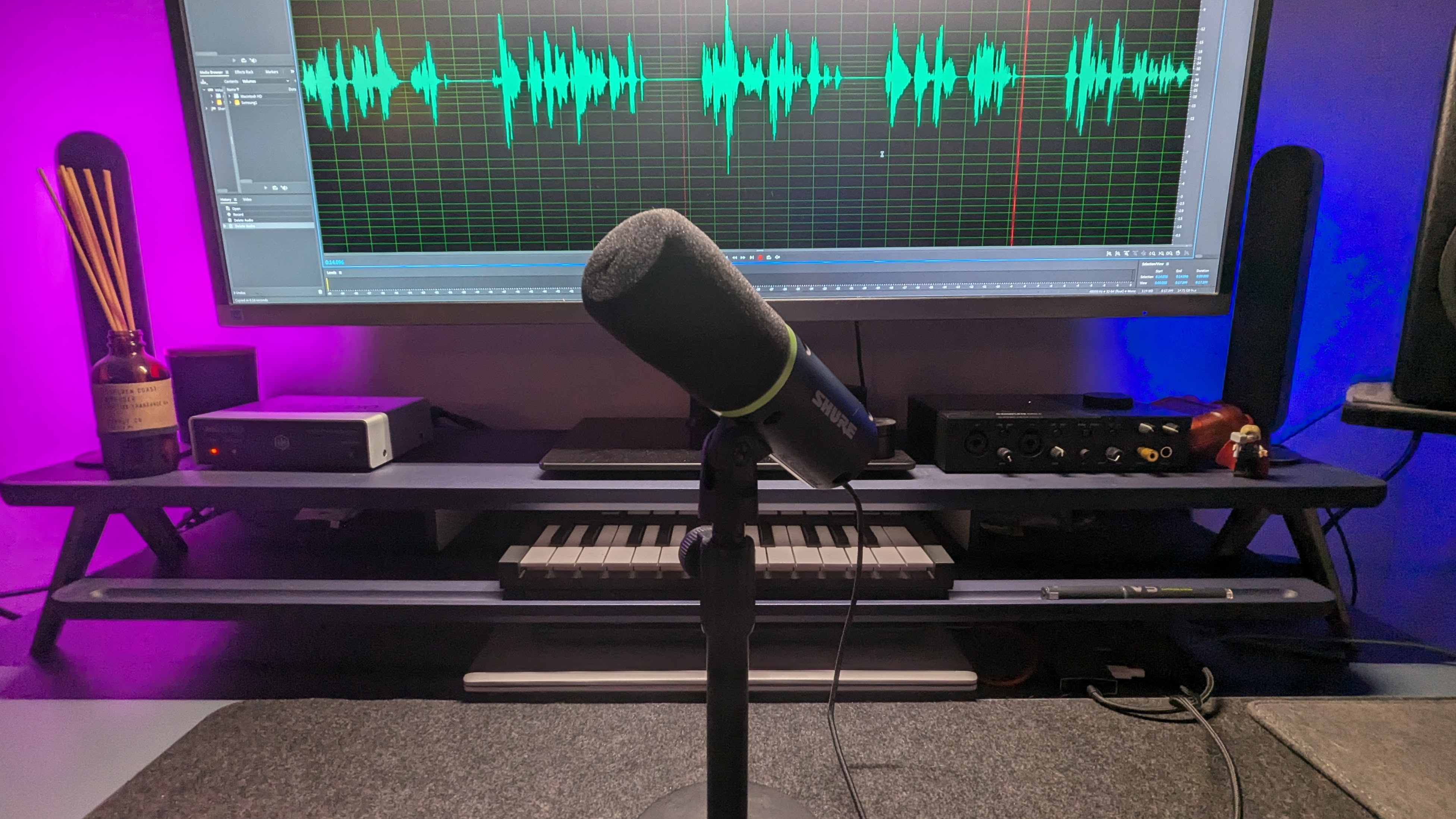
Specifications
Reasons to buy
Reasons to avoid
🎤 Someone new to podcasting or streaming who needs a reliable mic that does a lot of the audio heavy-lifting for them.
✅ Buy if you want quality on a budget: This is a well-built mic that sounds great and doesn't cost a packet.
❌ Avoid if you need a mic for more than podcasting: This isn't the most versatile mic, so if you need a tool for more than just speech applications, look elsewhere.
The Shure MV6 is a compact USB mic from the same stable as Shure’s excellent MV7 mic, that’s super accessible for podcasters, streamers, and gamers who want pro-level sound without all the hassle.
The MV6 really shines with its Auto Level mode, keeping your voice at the perfect volume even if you’re moving around while talking. For those who need a bit more control, Shure’s MOTIV Mix app lets you customize the mic’s tone with presets, tweak its built-in denoiser, and use the Popper Stopper feature to handle plosive sounds (think sharp “p” sounds) without needing an extra filter.
It’s all plug-and-play via USB-C, so you can use it with pretty much any computer or mobile device, and setup could not be easier. While it lacks an XLR option like its more expensive bigger brother, we found its ease of use and consistent quality make it a great fit for content creators looking for simplicity with fantastic sound. Overall, we found the MV6 to be a reliable, budget-friendly option that delivers excellent audio clarity with minimal fuss.

"While the Shure MV6 isn’t going to feature highly on any lists for music-making, it does excel at delivering quality recordings in a supremely user-friendly way. For content creators interested in making vocals and speech sound better, it’s easy to recommend."
Read more: Shure MV6 review
Best for beginners
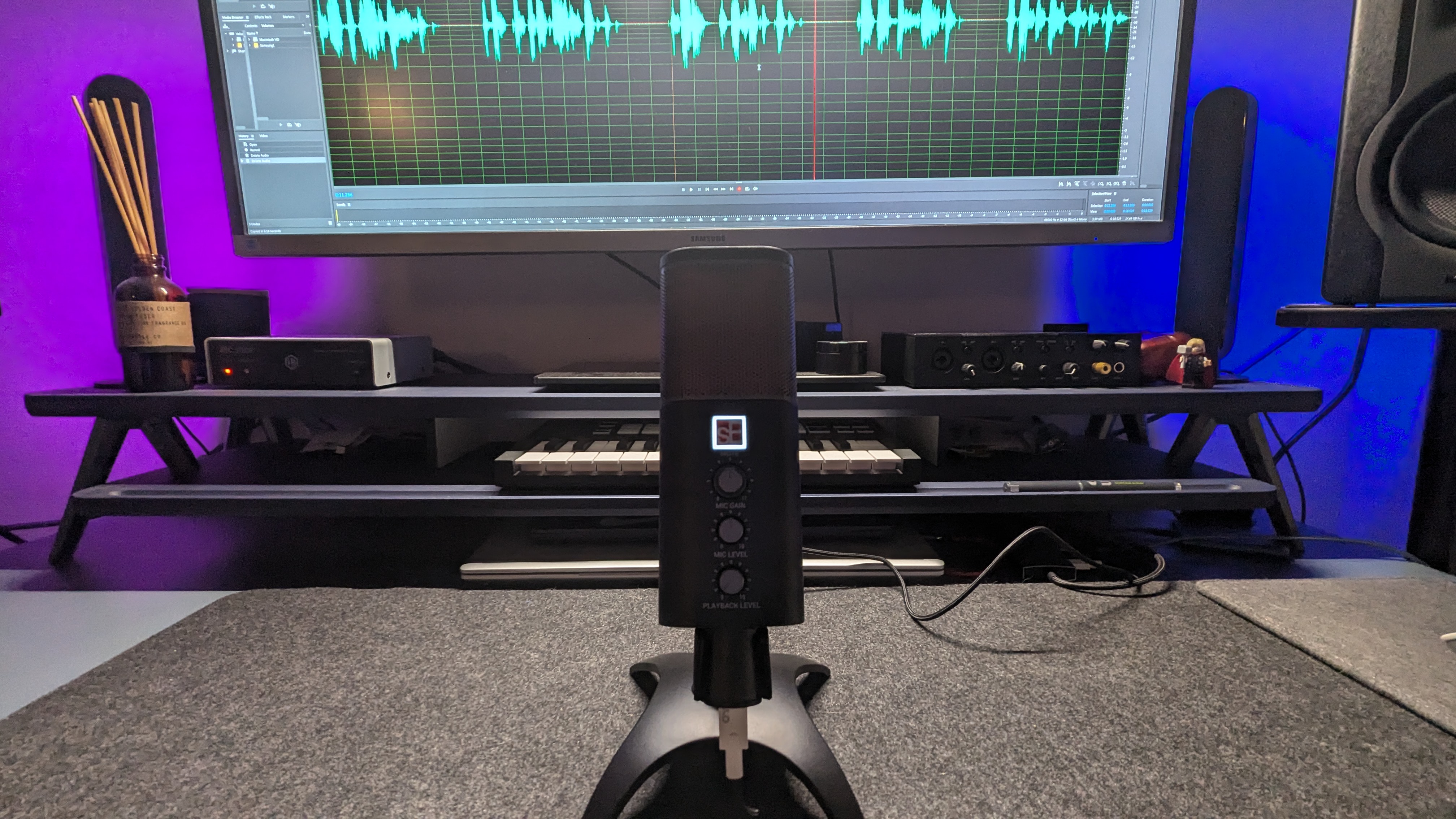
Specifications
Reasons to buy
Reasons to avoid
🎤 Total beginners looking for a clean sound from an easy to set up mic that doesn't overwhelm with features.
✅ Buy if you're just starting out: Newcomers to the world of podcasting will enjoy how easy this mic is to set up and operate.
❌ Avoid if you want a range of polar patterns: With only a single cardioid pattern available, you'll be slightly limited in what you can achieve with this mic.
The sE Electronics Neom is a refreshing option for anyone wanting top-notch sound in a simple, plug-and-play mic. The Neom combines high-quality audio with ease of use, making it a great companion for both beginners and experienced creators who don’t want to fuss with complex setups.
One of the Neom’s biggest draws is its robust, all-metal build, and its unique form factor which feels a cut above the other mics in the same price bracket. It’s got a cardioid polar pattern and a well-tuned condenser capsule, so it focuses well on your voice while reducing room noise. This is a big plus if you’re recording in a less-than-ideal space, like most home studios, where acoustic treatment isn’t always possible.
Sound-wise, the Neom is clear and warm, with enough detail to flatter spoken word and vocal recordings, though it may not have the depth that musicians might want for intricate acoustic work. For voice applications, however, it’s well worth a look.

"There’s a lot to like about the sE Neom, including its superb build quality and high fidelity recordings. It’s simple to use, and delivered great results across both speech and instrument recordings. For the price, it’s almost a no-brainer."
Read more: sE Electronics Neom review
Best sounding mic
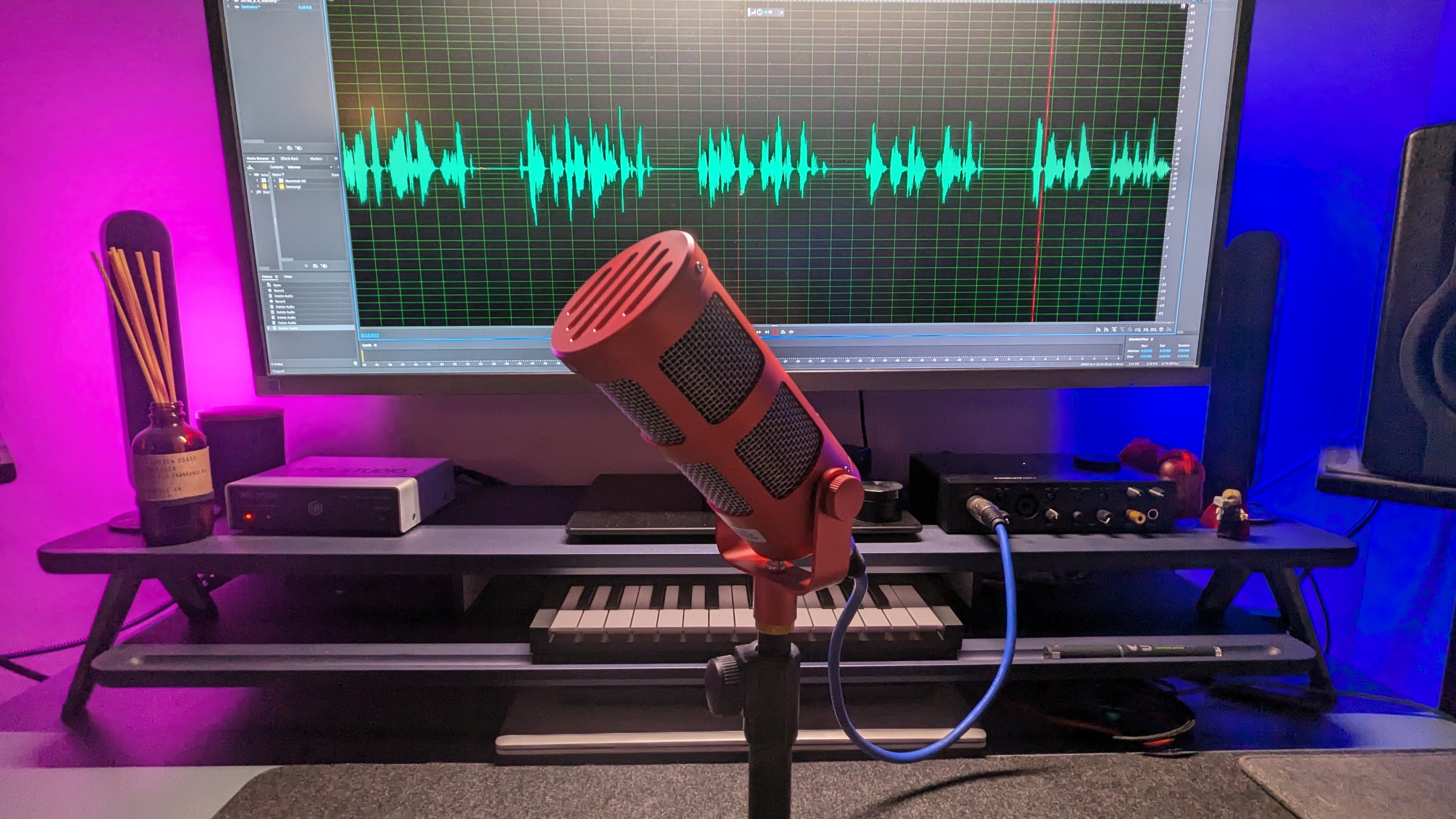
Specifications
Reasons to buy
Reasons to avoid
🎤 If sound is your number one priority, there are very few alternative mics that will deliver for the price.
✅ Buy if you want something that stands out: We love the vintage styling and colour options you get with this mic. It certainly beats the big slabs of black you see on most podcasts.
❌ Avoid if you want to record more than one voice: The Sontronics Solo is best as a single voice mic. You'll need multiples if you're going to invite guests on your pod.
Launched in early 2020, the Sontronics Podcast Pro is a dynamic microphone which has, as you may have worked out from the name, the world of speech recording in mind. This unique-looking broadcast mic is designed and built in the UK, and is geared entirely towards the spoken word. In practice, we found its supercardioid pickup pattern did a great job at rejecting pretty much everything that wasn’t spoken directly into it, although this does work against it when trying to record multiple voices at once.
With many podcasts now doubling up and offering video alongside the traditional audio, you could do a lot worse than inviting one of these stylish mics into your studio. There’s substance to its charms too, however, and it comes at a very reasonable price.

"The Podcast Pro is a great value, stylish home-broadcasting mic that also holds its own for simple home studio duties."
Read more: Sontronics Podcast Pro review
Best for pros
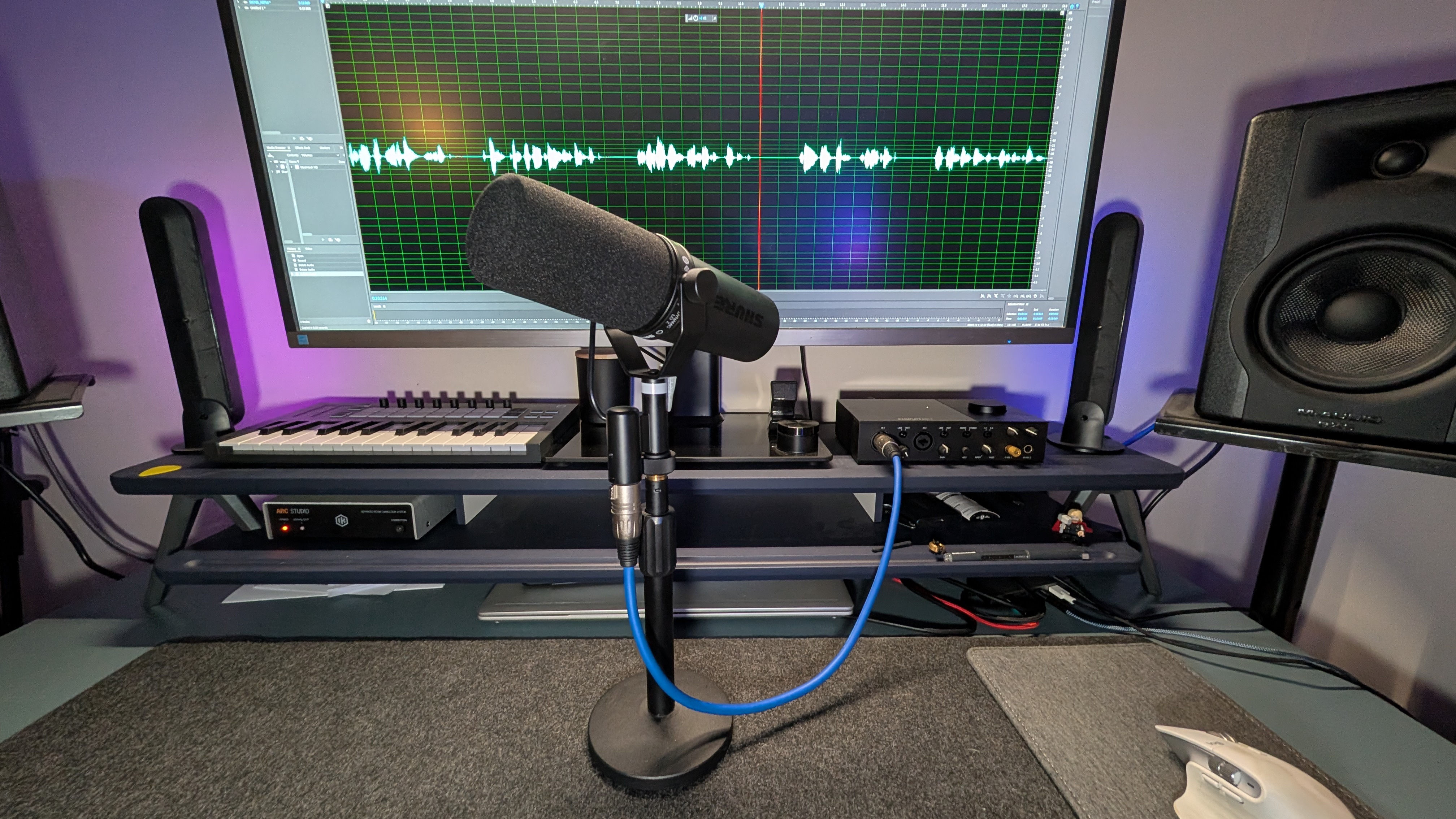
Specifications
Reasons to buy
Reasons to avoid
🎤 If you want a mic that can capture a range of voice applications, from podcasting to pristine sung vocals, this is the one.
✅ Buy if you want a pro mic for all voice applications: From recording podcasts to singing, this mic will produce beautiful results every time.
❌ Avoid if you have a limited budget: This is the priciest mic on this list, for good reason. But if you only intend to record pods this mic is overkill.
If you've ever been in a recording studio, or ever watched a band play live, you'll have seen Shure microphones. Simply put, they are the standard against which all other recording microphones are judged. The Shure SM7dB adds to this reputation by doing one thing really, really well: making the audio it records sound brilliant.
This dynamic microphone is designed simply to deliver clean, clear audio, and thanks to a new active preamp, it's got more than enough headroom now to offset its previous reputation of being quiet. As one of the only dynamic mics on the list, we should point out the ease with which the SM7B copes with loud environments too.
It's the flat frequency response we were most taken with during our tests, though; essentially, none of the frequencies it receives are emphasised in any way. This means that when you come to process the audio - e.g. add compression, EQ - it sounds as natural as when it was recorded. A top-tier microphone, no two ways about it.

"For anyone upgrading an existing mic, there are few models on the market today we’d recommend more highly than the SM7dB. We’d even recommend it for existing SM7B users, who will benefit greatly from the added flexibility that comes with the active preamp."
Read more: Shure SM7dB review
Best mid-priced mic
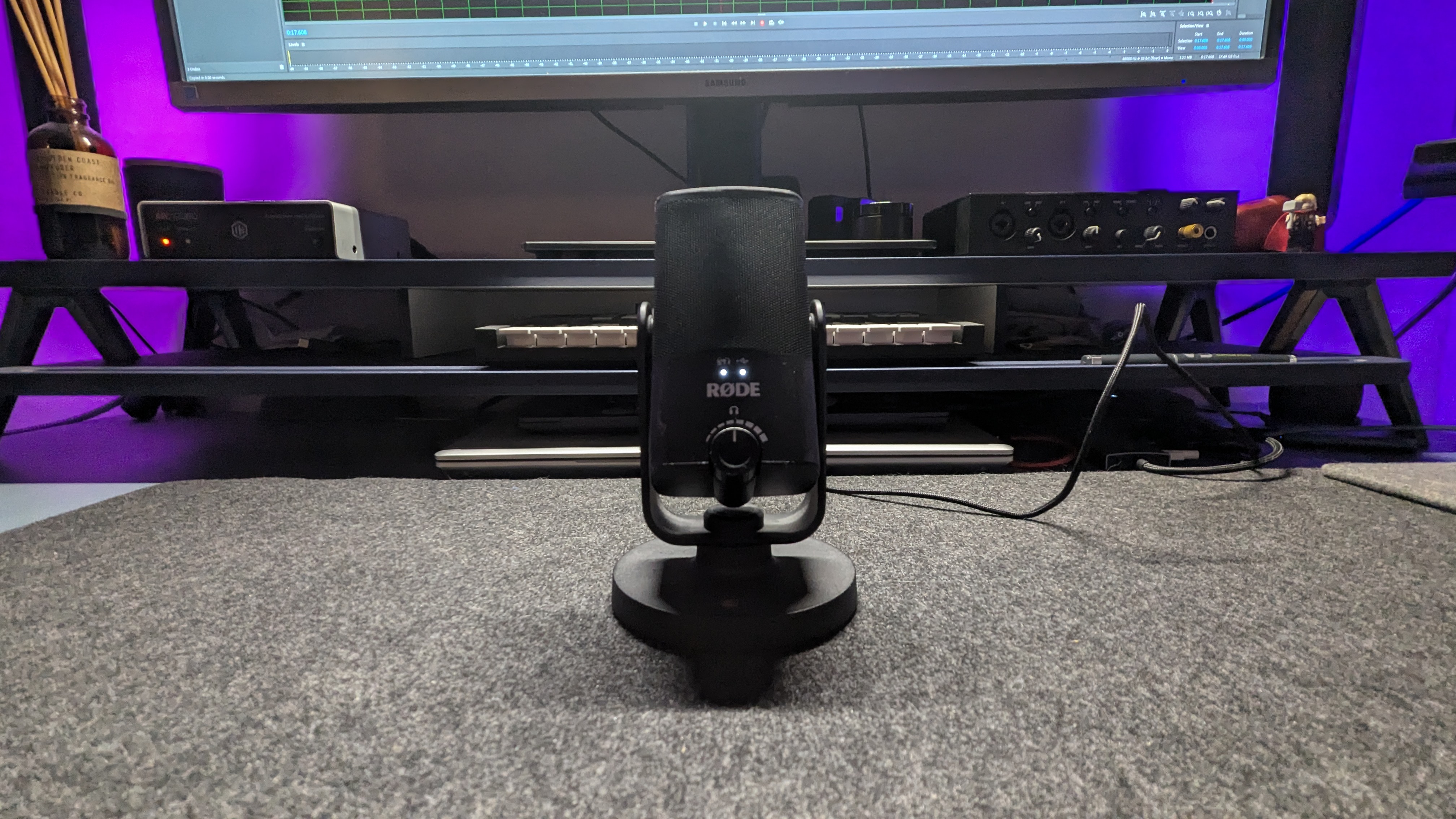
Specifications
Reasons to buy
Reasons to avoid
🎤 Podcasters who have only been working with beginner gear up to this point will enjoy the step-up to mid-range performance they get from the NT-USB.
✅ Buy if you want a great mic for mobile recording: The NT-USB works well with an iPad, so if you're taking your podcast on the go, this is an ideal option.
❌ Avoid if you're on a budget: Rode products are excellent, but you pay a premium for the quality.
Australian brand Rode has genuine pedigree in the world of microphones. Hence why we were drawn to the Rode NT-USB. As a specialist USB desktop mic, you're not likely to be taking it out in the field very often, but as a set-and-forget desktop option for podcasting it's an ideal choice.
Included in the pack is everything you need, including a 6 metre USB cable, so if you were required to move away from the desk and into the music studio it could comfortably work its magic on acoustic guitars, for example. For less demanding requirements, there’s also the neat Rode NT-USB Mini, which boasts many of the same features only using a smaller footprint.
For our tests we used the NT-USB to record into Logic on a Mac and Garageband on an iPad (check out our guide to the best iPhone microphones) and found it very straightforward to use - just plug in and crack on. There's nothing to adjust apart from the recording level on your connected device and your preferred monitoring level and mix.
During recording we were taken by how little there was in the way of self-noise and that the built-in headphone amp was loud and clear. Spoken voice recordings were delivered with no lack of bottom-end warmth or top-end clarity and no obvious tonal anomalies. The supplied pop shield also does a good job, allowing you to get close in and exploit the low-end from the proximity effect.

"Your computer's perfect partner for recording vocals and acoustic instruments with minimal fuss."
Read more: Rode NT-USB review
Best for durability
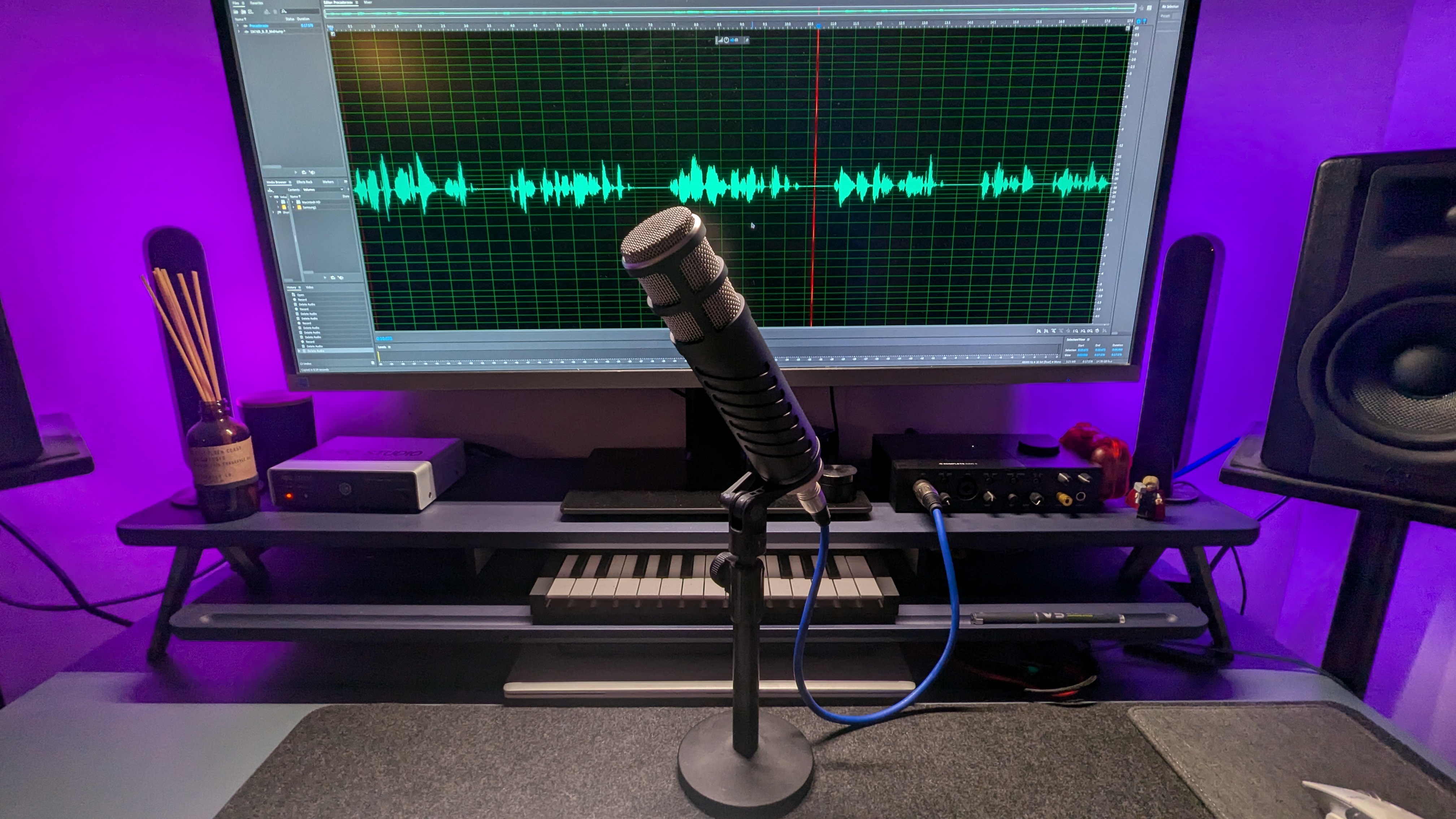
Specifications
Reasons to buy
Reasons to avoid
🎤 Podcasters who need brawn as well as audio performance. This is one burly mic that will take whatever you can throw at it (literally).
✅ Buy if you want a mic that will last: This mic feels incredibly solid in the hand and has a reassuring weight to it. If you're playing the long game, this is your next mic.
❌ Avoid if you have an entry-level interface: A quality interface with decent preamps will give you more control over the mic and the resulting sound. Less so if your interface doesn't pass muster.
Some of the mics on this list are equally happy recording vocals, guitars, streams or Skype chats. Not so, the Rode Procaster. The first of two Rode mics on this list is built specifically for vocal recording, and more specifically for speech. It’s pitched as a broadcast microphone, which means it could feasibly be used for TV, radio or other high-pressure situations.
From our tests we found the way the Procaster copes with ambient noise was the real stand out; its tight polar pattern means that no matter how noisy the environment, what you record will sound extremely focused and clear.
In practice, we found the mic to have a pleasing weight to it; enough that you'd definitely want a desktop mic stand on hand for longer sessions, but also robust enough that you know it will withstand years of recording.

"The Rode Procaster impressed us. For podcasting, voice-over work, or any other speech-driven medium, this is a microphone we’re happy to recommend."
Read more: Rode Procaster review
Best do-it-all mic
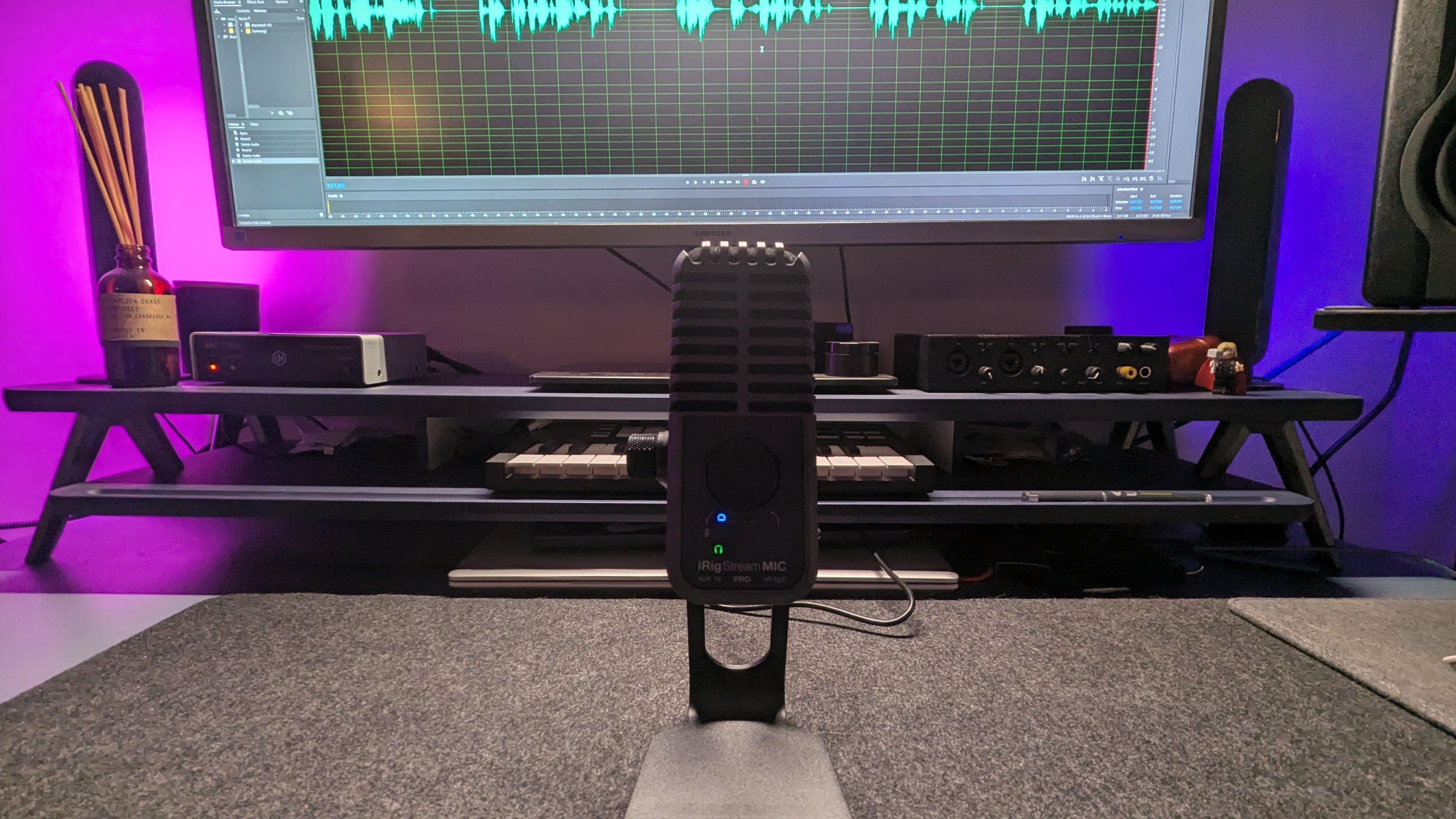
Specifications
Reasons to buy
Reasons to avoid
🎤 Podcasters and streamers who need an audio interface built-in
✅ Buy if you want an all-in-one mic: The iRig Stream Mic Pro has an audio interface built in, so you're ready to record straight from the box.
❌ Avoid if you want a rugged mic: This isn't the most sturdy-feeling mic we've tested. Look elsewhere if you're heavy-handed or regularly on the go.
We’re big fans of equipment that can carry out more than one function. IK Multimedia are the masters of finding new and innovative ways of increasing the capabilities and tricks their products offer, and the iRig Stream Mic Pro is a great example. Combining a dual-capsule condenser mic - with four different pickup patterns - with a 2 in/4 out audio interface for connecting different sound sources and outputs, means you really only need this device and you’re up and running.
We found the audio interface, in particular, to be nicely thought out, with loopback functionality meaning you can route audio from different applications internally. You might, for example, want to stream an Ableton Live session but find Windows doesn’t play nicely with multiple sound sources. Loopback is your friend here.
As with IK’s other gear, the iRig Stream Mic Pro is designed with portability in mind and full cooperation with the smartphones and tablets in your lives, making for a superb value, highly versatile mic which will suit a variety of different use cases.

"With so much in the way of options when it comes to USB microphones, it can be hard to decide which one is right for you. All we can say is that for streamers looking for a compact, all-in-one device that will take care of everything, without breaking the bank, the IK iRig Stream Mic Pro is pretty hard to beat."
Read more: IK Multimedia iRig Stream Mic Pro review
Podcast royalty
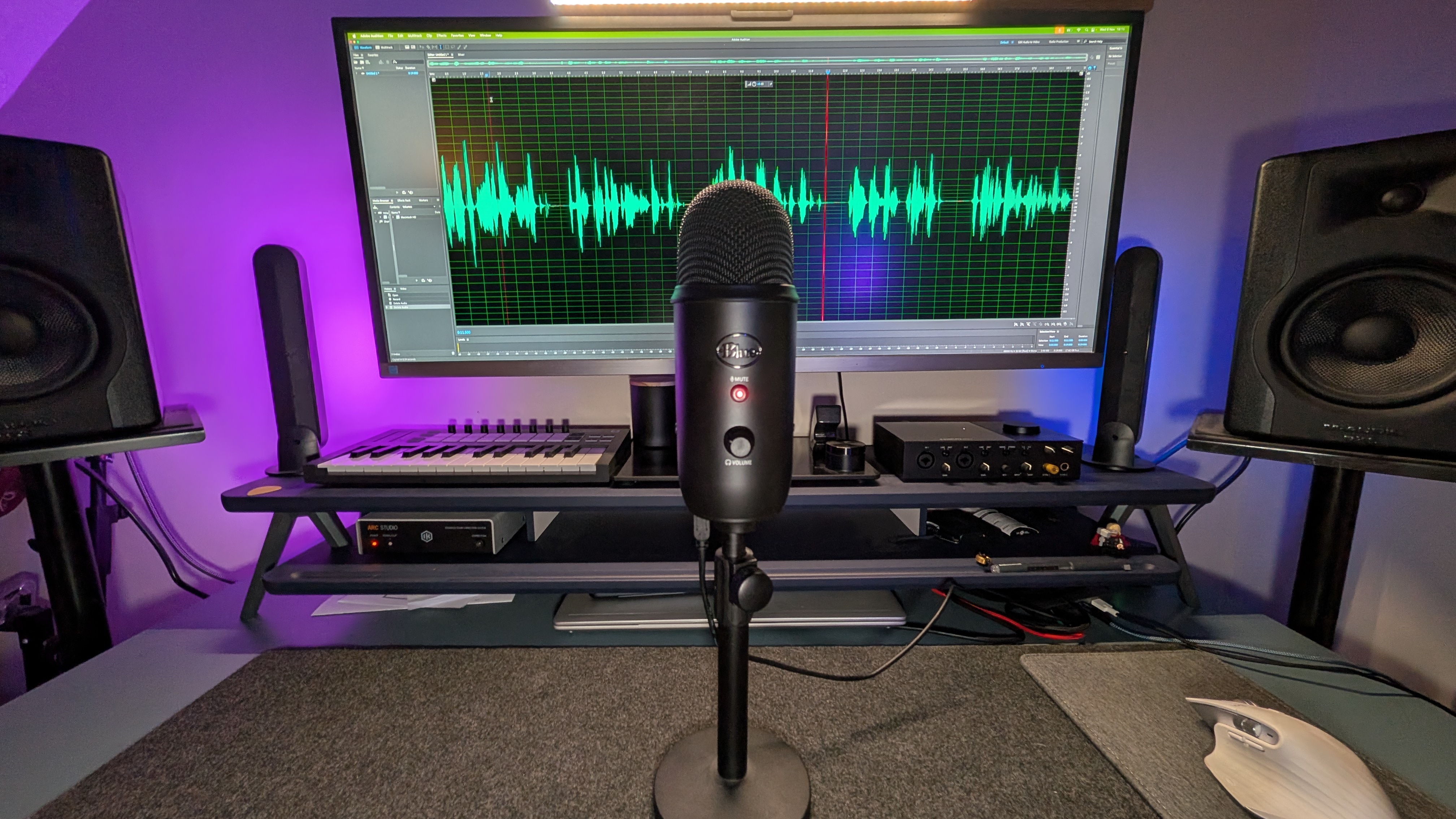
Specifications
Reasons to buy
Reasons to avoid
🎤 Podcasters who want a mic that has been tried and tested for years in the streaming and podcasting space. If you've consume online content you have 100% heard or seen a Blue Yeti.
✅ Buy if you want a tried and trusted option: One of the ones that started it all, the Blue Yeti is still one of the best value and most versatile mics there is.
❌ Avoid if you need an XLR connection: This one is USB-only, so if you need XLR - or the choice between USB or XLR - you will need to explore other options in this guide.
The Blue Yeti has become synonymous with a number of different applications. From Twitch gaming to YouTube tutorials, this mic is perhaps the best known and most-recognisable out there, and for good reason. In our tests we found it easy to use, it sounds superb thanks to its three condenser capsules, and doesn't cost the earth.
The multiple pattern selection feature is particularly neat. You can choose to either have the mic pick up the sound being directed straight into it, which is great for podcasting, or you can set it to pick up audio from a wider angle. This makes it the perfect choice for recording group sessions, where a single mic is placed in the middle of a table.
Over time, Blue has expanded its range to include higher-spec models capable of dual USB/XLR output (Blue Yeti Pro), a smaller scale version (Blue Yeti Nano), and even a model with functionality specific to game streamers (Blue Yeti X). And that's our only real gripe with the standard Blue Yeti - if you need an XLR connection you'll need to fork out more for the Blue Yeti Pro which is currently $120/£130 more than the standard Yeti. That's said, whatever your creative requirements, you'll find a Yeti to suit you.

"For podcasting, streaming and video conferencing, the Blue Yeti is still as simple and easy to use as ever. Highly recommended."
Read more: Blue Microphones Yeti review
Best for aesthetics
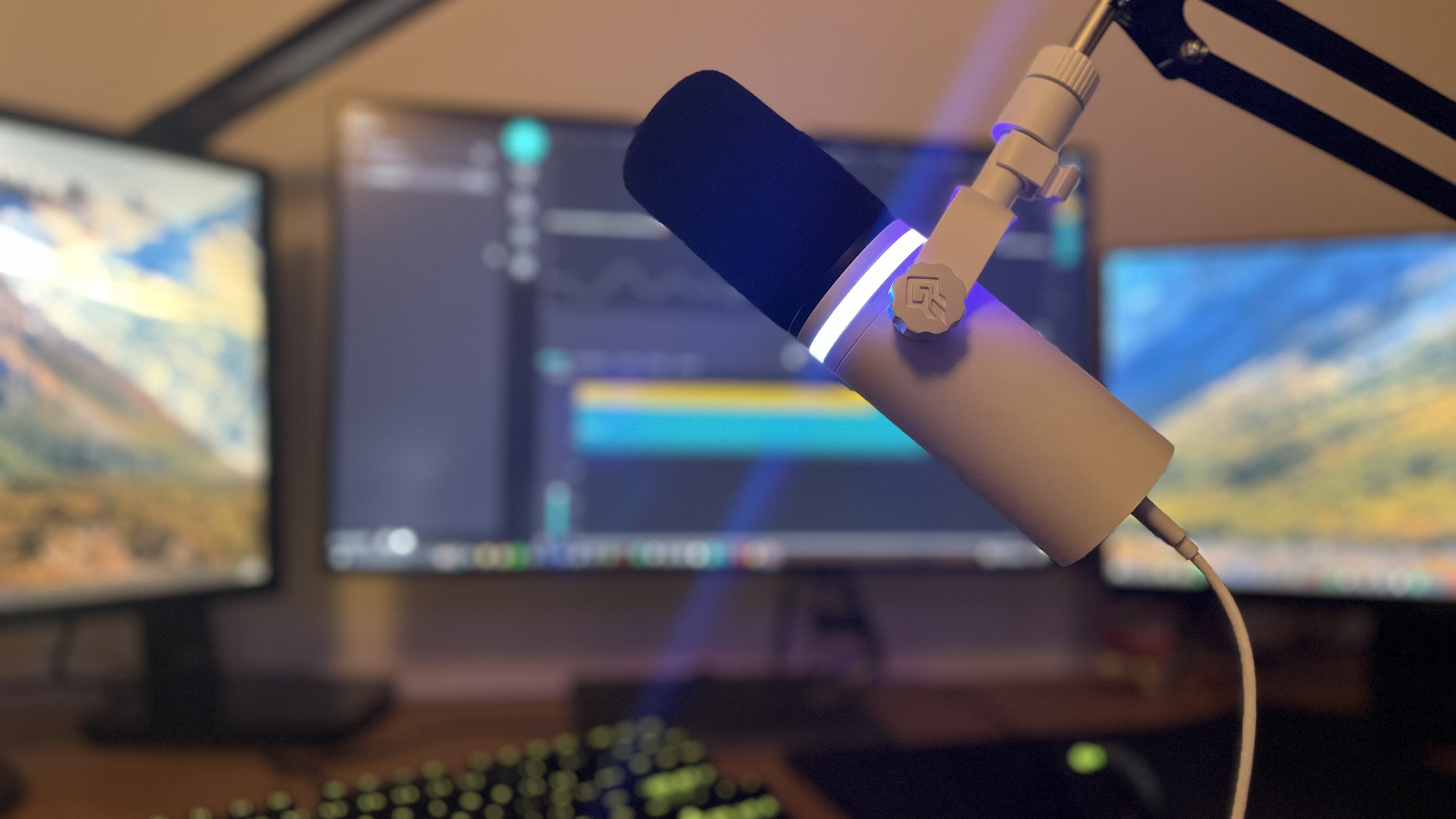
Specifications
Reasons to buy
Reasons to avoid
🎤 Podcasters or streamers who will be presenting on camera. In addition to great audio, buying this is also an aesthetic choice.
✅ Buy if looks are important: Streaming has a very clear aesthetic and this mic plays straight into that with built-in RGB light ring.
❌ Avoid if you want a straightforward mic: This mic requires the BEACN app to truly get the most from it.
You might not have heard of BEACN - yet - but quality this high won’t stay quiet for long. The BEACN Mic is a dynamic broadcast mic, which connects to your computer via USB and features some pretty nifty onboard processing to make your voice sound as good as it possibly can. A huge part of this is down to the complementary app, which is required to use the mic, but enables you to add a professional sheen to your voice through the use of various effects like EQ and compression.
At this price point there is a lot of competition, and BEACN is going up against some pretty big names. But from the moment we opened the box and started using the mic, it was clear this was a premium-grade tool which we can see podcasters, streamers and vloggers alike going crazy for.

"There are cheaper options out there if all you’re looking for is a simple USB microphone. If it’s quality you want, both in terms of the product and the results it gives you, then the BEACN Mic is a serious contender."
Read the full BEACN Mic review
Spec comparison
Want a clearer look at how each of our favourite mics stack up against each other? Here's all the key spec side-by-side:
Mic | Launch price | Type | Connection | Polar pattern | Extras |
|---|---|---|---|---|---|
Shure MV7+ | $279/£269 | Dynamic | USB, XLR | Cardioid | USB-C to USB-C cable |
Shure MV6 | $149/£129 | Dynamic | USB | Cardioid | USB-C to USB-C cable |
sE Electronics Neom | $99/£109 | Condenser | USB | Cardioid | USB-C to USB-A cable |
Sontronics Podcast Pro | $164/£125 | Dynamic | XLR | Supercardioid | N/A |
Shure SM7dB | $499/£499 | Dynamic | XLR | Cardioid | Windscreen, thread adaptor |
Rode NT-USB | $99/£99 | Condenser | USB | Cardioid | Desktop stand, pop filter |
Rode Procaster | $229/£165 | Dynamic | XLR | Cardioid | Ring mount |
IK Multimedia iRig Stream Mic Pro | $169/£169 | Condenser | USB Lightning | Cardioid | Table stand, USB-C and Lightning cable |
Blue Mics Yeti | $129/£129 | Condenser | USB | Cardioid | Desktop stand, USB cable |
BEACN Mic | $299/£299 | Dynamic | USB | Cardioid | USB-C cable, 1.5m headphone extension cable |
How to choose the best podcasting mic for you
When researching podcast mics, whether it’s to replace an old studio workhorse or as your first foray into this world, there are a few questions you should ask yourself. While microphones all largely carry out the same function, there are some differences which can make certain types better suited to specific applications. Allow us to explain.
If your podcasting career revolves around recording one person in a static location, like a bedroom or kitchen studio, using a laptop or tablet as your hub, then this will affect the type of mic you'd choose. Likewise, recording multiple people or sound sources means your horizons will need to broaden in order to achieve this. Choosing the best podcast microphone for your needs will depend entirely on how you plan to use it. When it comes down to it, however, the choices you’ll need to make come down to just two; the type of microphone you’ll need, and how you’ll connect it to a recording device.
FAQs
XLR vs USB microphones – which is best for podcasting?
A good place to start involves looking at the way the microphone will connect to something in order to record. In one corner you have USB; mics using USB are predominantly plug and play, and require very little knowledge of sound. You plug it into your laptop, hit record in your podcast recording software of choice and you're good to go. You’ll tend to find decent quality USB microphones are inexpensive enough to make them a viable first choice for newcomers, and their inherent simplicity makes them an attractive choice for many different kinds of setup.
What might potentially cause an issue is if you’re a Windows PC user. For all that it does well, Windows isn’t brilliant at handling multiple audio sources over USB. Mac users have no such problems, thanks to them being able to create ‘aggregate devices’ which combine multiple audio interfaces into one, but no such joy if you’re on Windows. Admittedly, this is only an issue if you have another USB audio source connected, like an audio interface, but is worth considering. That being said, for small-scale pods requiring only one voice, you can make use of the headphone socket found on most USB mics to monitor while you record.
For more advanced scenarios, you'll want to use mics with an XLR connector, and either a podcast mixer or audio interface. This enables you to use multiple microphones at the same time, with tactile control over sound levels. Whether the recorded audio is of a higher quality depends largely on the microphone itself, and the mixer or audio interface, but the potential is certainly there. Going down the XLR microphone route does mean you’ll need extra equipment however, so if you’re aiming to keep your setup lean and cabling down to a minimum, then our recommendation would be to go down the USB route.
For those budding podcasters just starting out, follow our guidance on how to start a podcast. And if you intend to make a career out of podcasting, here's some guidance on how to make money from podcasting. Good luck!
Which microphone type is best for podcasting?
There are an increasing number of microphones marketed as being dedicated podcast microphones; underneath the buzzwords you’ll find they’re almost exclusively condensers or dynamics, and either XLR or USB connected. Condenser mics are perhaps better suited to studio locations as they bring out a richness in voices, however the trade-off is that they can be more sensitive to ambient noise. You’ll also need to factor in 48V phantom power if you’re using an XLR condenser - USB versions take care of this via the computer connection.
Dynamic microphones, on the other hand, are a bit livelier, and are ideal for outdoor recording or in environments with lots of loud noise. They also don’t require any external power, so can be plugged into any mixer or audio interface and will work immediately.
What are the different types of microphone pickup patterns
Typically, you’ll find certain functions are ideally suited to podcasting. Look specifically for the mic’s pickup pattern - sometimes called its polar pattern - as this dictates the area around the front (or side) of the mic where it actually captures the sound. Most have a cardioid pattern, which means the mic will collect sound from a specific area and actively reject sound which comes from outside that space. This is great for ensuring your voice is recorded but not the creaking floorboards at the other end of the studio.
However, if you want to record multiple people with the same mic, an omnidirectional or figure-8 option might be better, as these pick up sound from a wider field. Some even feature multiple pickup patterns built in so you can choose depending on the situation you find yourself in.
Many modern mics also allow you to remove unwanted frequencies directly on the microphone, via a high-pass filter. This is useful to remove low-level rumbling or humming from the recorded sound, giving you cleaner audio to process in post-production.
Which are the best podcasting microphone brands?
Most pro microphone brands have stepped into the podcasting mic world in recent years - understandable considering the massive rise in people podcasting and streaming. Thanks to a sterling reputation in the pro audio world, you can rely on the usual suspects like Shure, Audio-Technica, Sontronics and Rode to produce gear you can trust.
Another big player in the podcast microphone world is Blue Microphones. They first emerged in 1995 and are best known in the podcasting and streaming world for the Yeti microphone range - of which there are currently four models. The Yeti was first launched in 2009 and has become a staple of the reliable, affordable podcast mic sector.
IK Multimedia is another brand who has built a very strong reputation for quality audio gear at affordable prices.
How much should I spend on a podcasting microphone?
Investing in one of the best podcasting microphones doesn’t need to break the bank. The most expensive mic we recommend in this guide is the Shure SM7B, which comes in at around the $/£399 mark. That’s no small investment, but you get what you pay for and both the audio and build quality of this podcast mic speaks for itself. If you’re serious about podcasting (or if you need a great vocal mic, for that matter), you should think seriously about buying the SM7B.
That said, our top pick in this guide is another from Shure, the USB-equipped MV7. For this one you’ll pay around $249/£199 and the results will blow you away.
If this is still beyond the top end of your budget, anywhere between $/£100 and $/£200 will bag you a budget podcasting microphone edging towards pro quality. It’ll be no frills, but it will reliably get the job done.
Search for one of the best podcasting microphone under $100/£100 and you’ll be in the realms of less well-known brands and gear best suited to the mobile user. They’ll do the job, but you will notice a drop in build quality and audio reproduction compared with the more expensive models here.
How do I mount my podcasting mic?
Finally, give some thought to how the mic will be placed. Most, but not all, will come with some kind of desk tripod, however, the smart money is on using a more robust stand or - better still - a boom arm, so make sure the mic you choose is compatible with your chosen method of holder.
How we test podcasting microphones
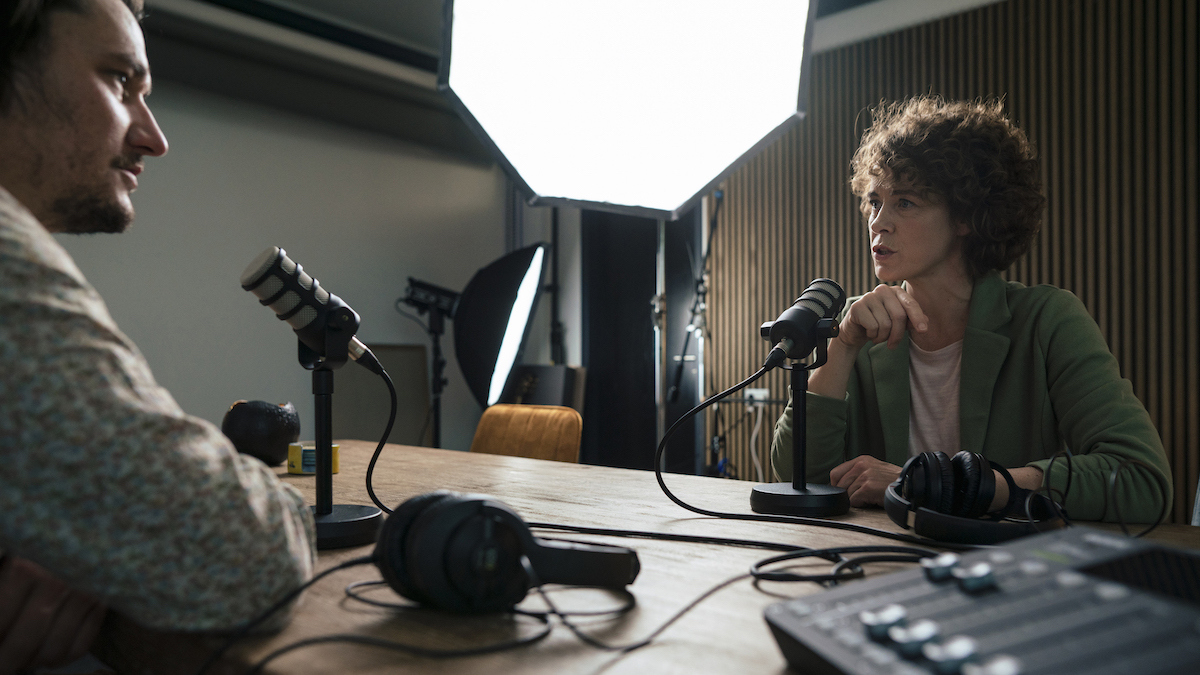
Testing the best podcast microphones means more than a quick "check one two" - with so many podcasting microphones on the market, we take our testing further to demonstrate the real-world situations you might find yourself in. As a former broadcast journalist, I'm familiar with the different requirements of a speech-focused microphone, and I try to bring that experience into every review. When testing a podcasting microphone, we're looking for a few different things. Ease of use is important, for example, as is a low noise floor, i.e. whether the mic picks up low-frequency rumbling. This is because many podcasts are recorded in spaces that wouldn't normally fall into the 'studio' category. This could mean lounges, kitchens, cars or even outside in the local park, so our reviews must reflect this.
To test their prowess, I record various spoken word passages into the mic, recording them directly via USB or, if it's an XLR mic, into my audio interface (just a standard Focusrite Scarlett - nothing special). I try to keep consistency from one mic to the next, so the speech recordings themselves are the same - an advert-style voiceover, a broadcast-style news report and then some ad-hoc chatter to test out the dynamic ranges of each mic. From there, Adobe Audition allows me to view the recorded waveforms so I can see peaks and troughs, and even to analyse them via the spectral frequency display to see overall loudness hotspots. Put simply, a good microphone will require little in the way of post-production, whereas a cheaper, lower quality mic may require equalization, or compression adding before it can be considered acceptable.
As well as technical testing, I'm also looking at the physical unit itself. If it has buttons or knobs, do they turn or switch properly, or is there any wobble? Do the mic's connection points - USB or XLR - give me confidence they will last long into the future? Then, of course, the price. This will likely be the main factor when it comes to choosing your new podcast microphone, but it's important to distinguish between the upfront cost you pay, and the value you'll get in the long term. Some mics, and mic brands, command a premium price so we try and establish why this is and if you're paying over the odds for the name on the box, or if that heritage and track record is genuinely worth the extra cash.
As with any studio equipment, there are countless ways in which you could end up using it out in the wild. Our reviews try to be as objective and rigorous as they can be, while also acknowledging that your own mileage may vary. It's not an exact science, but if it helps match you up with the perfect podcast microphone for your own needs then we've done our jobs here.
Read more about how we test music making gear and services at MusicRadar.
How we record our podcast mic demos
In addition to writing down our thoughts on each mic, we want you to hear them in action, so we've recorded an audio sample of each one in this guide. Every mic was recorded under the same conditions in a quiet (but untreated) space with the same cabling and settings used throughout. Each mic was connected, either via USB directly into a 2022 MacBook Air, or using an XLR cable into a Native Instruments Komplete Audio 6 interface. Recordings were captured directly into Adobe Audition and, other than trimming out the occasional pause or stutter, no further production, edits or effects were used. All sounds are clean, direct from the mics themselves.
Latest updates
Recent updates
03/03/25: We've add 'who is this mic for' sections alongside each of our microphone choices, so it's even clearer the application for each mic. We also compiled a handy spec comparison table so you can get a quick look at each mic side-by-side.
18/11/24: This guide has been updated in a number of ways: We've added two new microphones to the list - the Shure MV6 and sE Electronics Neom that we've recently reviewed - and removed two Audio-Technica models; recorded audio demos for all microphones features in this guide and embedded them within each product entry; all copy has been given a general sense-check to ensure we're still providing accurate and useful information; we've re-ordered the product list slightly.
Read more:
MusicRadar's got your back
- Starting your own pod? You'll need one of the best podcast hosts
- Store more stuff with the best external hard drives for music production
- Listen in with the best studio headphones for all budgets
Get the MusicRadar Newsletter
Want all the hottest music and gear news, reviews, deals, features and more, direct to your inbox? Sign up here.
Chris Corfield is a journalist with over 12 years of experience writing for some of the music world's biggest brands including Orange Amplification, MusicRadar, Guitar World, Total Guitar and Dawsons Music. Chris loves getting nerdy about everything from guitar and bass gear, to synths, microphones, DJ gear and music production hardware.